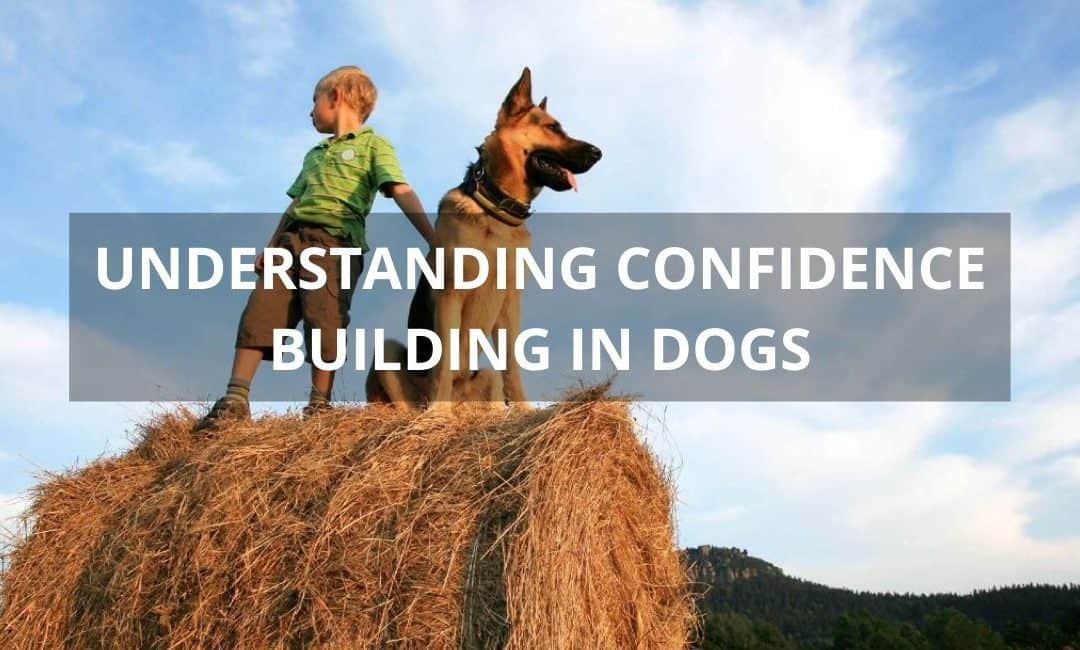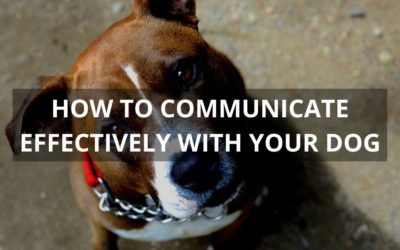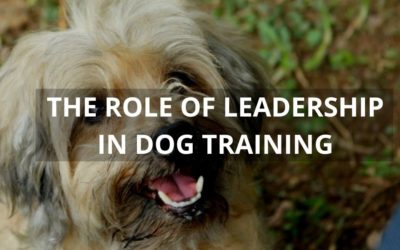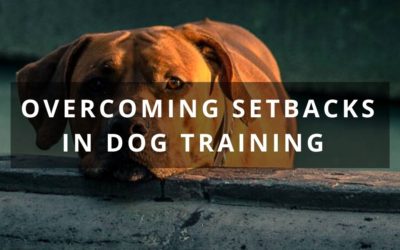A confident, self-assured dog is easier and more enjoyable to train, work, and live with. Unfortunately, many things can happen to create an under-confident dog. But never fear – confidence building in dogs can be accomplished with training and confidence-building activities, plus a little patience and understanding.
What is Confidence, Anyway?
The Oxford English Dictionary defines confidence as “a feeling of self-assurance arising from an appreciation of one’s own abilities or qualities”.
A Psychology Today article describes confidence as “… a belief in oneself, that one has the ability to meet life’s challenges and to succeed—and acting in a way that conveys that belief. Being confident requires having a realistic sense of one’s capabilities and feeling secure in that knowledge… Confidence is not an innate, fixed characteristic. It’s an ability that can be acquired and improved over time.… Continuing to set and meet goals can enable the belief that one is competent and capable.”
I know those definitions are about confidence in humans, but I feel confident (ahem) in saying that they describe confidence in dogs pretty darned well.
My definition of a confident dog:
A confident dog feels secure in his ability to meet life’s challenges and succeed. Confidence is a skill (versus a temperament trait) that is acquired through accomplishment and learning.
Why is Confidence Building in Dogs Important?
Confident dogs enjoy learning new things and taking new adventures. They take everyday challenges in stride.
Confident dogs don’t have to be excessively coaxed into doing simple things. They don’t have to be watched like a hawk in case they interpret someone’s actions the wrong way.
The confident dog is unlikely to take minor setbacks to heart. Their recovery time and willingness to try again after a slight mishap is generally fast. They’re able to move up to new, more difficult and challenging levels of training or adventure with ease.
If you are a hobby trainer, competitor in dog shows, sports or working trials, or if you simply love to include your dog in family adventures, having a confident dog will be important to you.
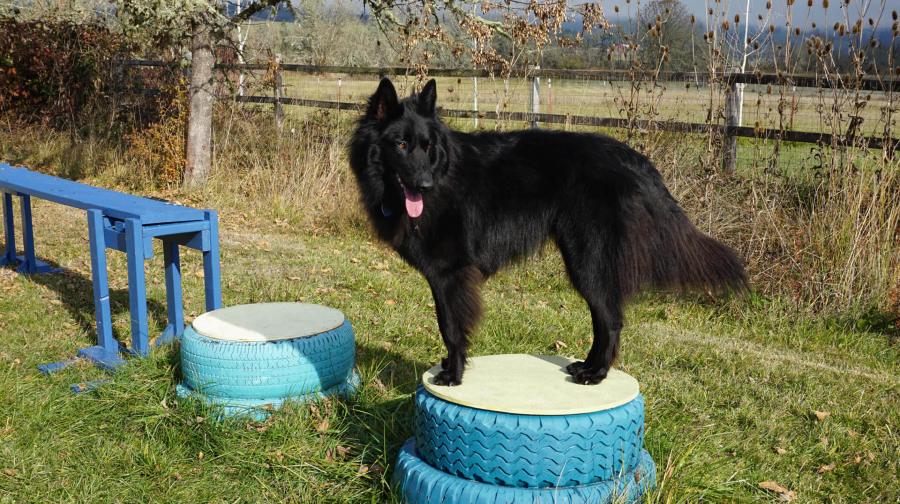
Why Are Some Dogs Under-Confident?
Genetics and early learning. While confidence may not be an innate trait, genetics, early learning and maternal influence certainly influence whether a dog is more or less confident.
A dam that is too aggressive or too permissive, lack of handling, insufficient variety in the environment, as well as a puppy staying with its littermates too long, can all set the stage for a less confident dog.
Poor socialization. In order to confidently move through the world, all puppies need to be gently, positively, and consistently exposed to a wide variety of sights, sounds, smells, surfaces, animals and people (of all ages, colors, mobilities, etc.).
That exposure needs to be done until they reach maturity, ideally. And once mature, it should be maintained (i.e. scheduled on a reasonably regular basis, depending on how naturally confident the dog is).
Lack of this kind of exposure to the world will frequently result in an under-confident dog.
Mishaps and misadventures. Even in a naturally confident dog, setbacks can happen that undermine confidence. A dog gets roughly handled at the vet’s, or attacked at a training class or dog park, or has a bad experience boarding, etc.
These dogs may have started out a little apprehensive, and become worse. Or they may have been blissfully naïve, and were truly traumatized.
This is why you want to be properly cautious with what and whom you allow your dog to be exposed. I’m not suggesting keeping your pup in a bubble, just to use sensible caution.
While you don’t want to coddle, you must protect your dog and be his advocate. And yes, that can be a bit of a balancing act.
Dogs that have been punished harshly for making the wrong choices may well lose confidence, and (wisely) become sensitive to possible repercussions of trying and failing.
Lack of training. Ever gone to a party or event, wanting to make a good impression, but not really knowing what was expected of you? It’s a confidence killer, isn’t it?
Imagine, then, being a dog in a human world, and not having anyone explain to you what’s expected. An absence of clear expectations and guidance (i.e. “training”) does not help any dog’s confidence.
In addition, dogs need to “learn how to learn”, that is, they need to come to understand the learning process. This doesn’t happen by accident. Not having any idea of how to succeed in a learning situation can put a real damper on confidence in dogs.
Relationships that undermine confidence. I’m sure I’ll lose some friends on this one, but the fact is, an unbalanced relationship can contribute to lack of confidence in dogs.
Over-indulged dogs can become needy and clingy, and may learn to display hesitancy to draw attention or sympathy.
Owners who control and dominate can trigger resistance and uncooperative behavior (which can look like lack of confidence), or may create a dog with no self confidence.
Indecisive, inconsistent dog owners can end up with a bossy, controlling dog that lacks confidence due to having no clear leader to look up to, or that refuses to try things as a way of asserting itself.
It’s worth noting that dogs can be confident in one area and not another, and at some learning and life stages and not others. For instance, a dog may be supremely socially confident, but as a training partner, not confident learning new things.
A dog may be confident environmentally, but not meeting new people. (Or vice versa on both counts.)
A typically self-assured performance or working dog may experience some temporary lack of confidence when moving up to a new training level that requires greater independent decision-making or working at a distance from the owner.
Confidence can wane in older dogs struggling with illness, or simple aches, pains, and a body that just doesn’t move like it used to. Basically, we should expect confidence to be more fluid than static.
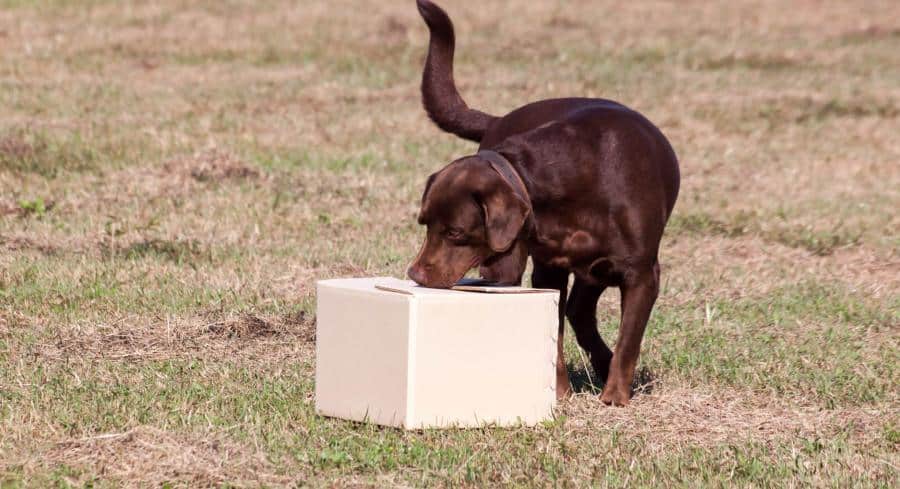
8 Ways to Boost Confidence in Dogs
There are quite a few ways to support the dog that lacks confidence. Some are specific confidence building exercises for dogs; some involve approaching training with the right mindset.
Training Builds Confidence in Dogs
Say to yourself: Obedience is sexy. Don’t fall to the temptation of overlooking basic obedience training as “too traditional” or “not my idea of fun” or “only for big, beefy dogs”. Obedience is not just for big dogs or boring dog owners!
What we call “obedience” (sometimes called “manners training”) is the process of your dog learning tried-and-true ways to move through the world and interact with it.
Good training shows your dog how to succeed in day to day life. Now that’s confidence booster that should never be under-estimated.
Confidence-Boosting Activities for Dogs
Dive into confidence-building exercises and experiences. There are so many options for confidence building in dogs!
Dog agility (either formal or pet), confidence course, obedience training, tricks, Parkour, tracking and other scent work, hiking, all kinds of wilderness and urban adventures… the list goes on.
Frankly, virtually all new learning and new experiences, approached patiently and positively, will build a dog’s overall confidence. But it seems that challenging and engaging your dog physically – with running, jumping, balancing, searching, exploring – is an almost universally ideal way to build confidence in dogs.
Training Tips for Increasing Your Dog’s Confidence
Try a new approach to the same training. Already have your dog involved in what should be confidence boosting activities, but don’t seem to be making progress? There are many ways to learn any one thing.
Do your research and find a new way to approach the problem. Your dog trainer, friends at the dog club, next door neighbor, or Uncle Billy may tell you that the one and only way to teach your dog ABC is to do XYZ. Period.
Well, that’s baloney, pure and simple. Spend some time and energy finding an alternative approach. Your dog will thank you and you may just be able help someone else having the same problem someday!
Try learning something new. It is well known that confidence gained in one area of life can “spill over” into another area. So, if you have a dog that’s lost confidence in one situation, don’t laser-focus all your efforts on that one scenario.
Maybe give that area a rest for a few weeks or months, and try something truly different with your dog. Who knows, you might both gain some new skills (and the confidence that goes along with it)!
Regulate your dog’s play and training sessions so that he has the best chance of succeeding in them. This doesn’t mean wrapping him in cotton wool (as the Brits say). 🙂 Keep the bar low at first, and raise it so gradually that it doesn’t occur to your dog to worry if he’s doing it right (hard for us over-achievers, I know!).
With under-confident learners, I like to keep training sessions short and sweet and quit before the dog starts to second-guess himself.
As he gains in confidence, you can easily increase the time you spend training. How long is short and sweet? It may be 30 seconds for one dog, and 5 minutes for another.
Get to know your own dog’s limits (which will change over time) and adjust your training time accordingly.
Don’t load your dog down with your emotions. It is so easy to get upset, agitated, bummed out or frustrated by a negative reaction! Many dogs are very “pressure sensitive”, particularly to expectations and disappointment.
So be a good teacher, and a good leader: train *yourself* to not be over-sensitive to your dog’s sensitivities.
This is one reason tricks training is often recommended for under-confident dogs, as well as dogs new to the art of learning. Because we humans tend to place low value on tricks, there is no particular urgency to learn them, and no let-down if it doesn’t turn out perfectly.
We have fun teaching them and are thrilled with what we get. Because of this low-pressure attitude, dogs very often learn tricks more quickly and confidently than they do traditional “obedience” (which we tend to take oh-so seriously).
Aim for small, steady accomplishments. One of the biggest obstacles to increasing confidence is biting off more than we can chew!
Break down learning challenges into small, easily understood and accomplished pieces. Every piece your dog tackles will be a score for him (and you), and a confidence booster.
Bring in a good influence. If your dog is under-confident around certain things or in certain situations, try introducing him to those situations with a confident buddy.
Many under-confident dogs will take their cue if accompanied by a dog that is confident and at-ease in that type of situation. Once your dog gets used to feeling confident with his buddy around, try going back into that same situation – briefly at first – either without the other dog or with it at a distance. Praise your dog warmly and reward him for any and all confident actions and attitudes.
Conclusion
Always remember that confidence is an ever-evolving quality that can be improved or degraded. If your dog has good confidence, now you know how to maintain it. If your dog could use a boost of confidence, you have a number of strategies for improving it, and every reason to believe you can succeed!
I hope these tips give you some ideas to get started building your dog’s confidence. Just remember the old dog trainer’s adage: Be Patient, Persistent, and Consistent! And soon you’ll be on your way to a more confident dog!
julie
(bio)
